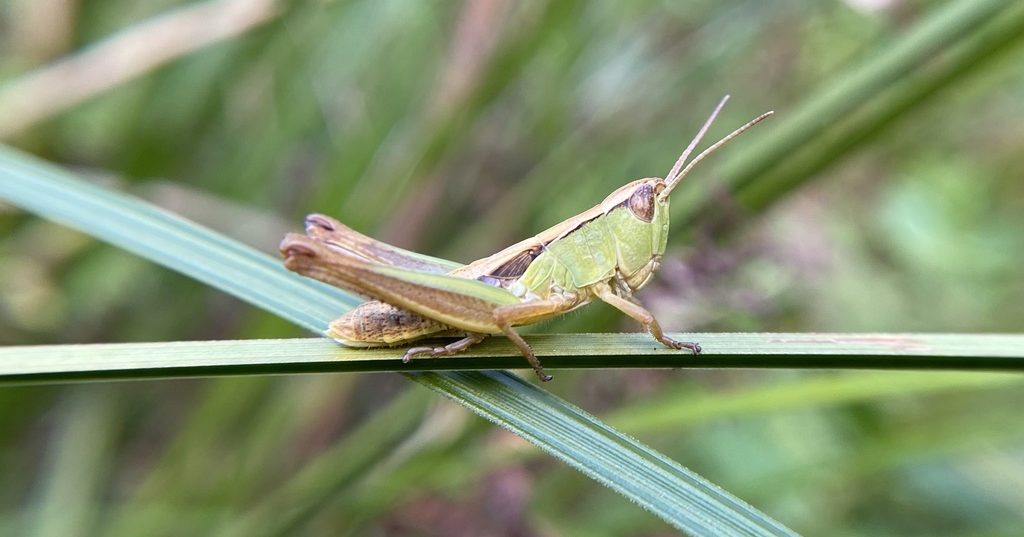
Marsh Meadow Grasshopper (Chorthippus curtipennis) © christopherbonis (iNaturalist)
The dominant habitat preference of the Marsh Meadow Grasshopper is for grassy areas, dry to damp, including herbaceous wetlands and riparian areas, but they can be found on roadsides and in the tundra. They are active in the day after temperatures have risen and feed on grasses and sedges.
They are found throughout Canada and northern two thirds of the United States. In NM and AZ, they are found only at high-elevation mountain meadows.
Also known as Pseudochorthippus curtipennis. Alternate common name is Meadow Locust.
Conservation Status
Vermont:
Global: G5
Phenology
Phenology differs depending on specific area within range. In the south, and at low elevations, one generation is produced each year. Overwintering occurs in the egg stage and adults are active from mid-June to mid-October. In the north, and at high elevations, the life cycle likely takes two years or more
More Information
- iNaturalist Species Account
- Songs of Insects
- BugGuide Species Account
- Wyoming Agricultural Experiment Station Bulletin
- Vermont Atlas of Life Data Explorer
Vermont Distribution
All Records:






